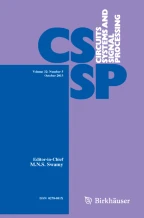Abstract
Unary coding is useful, but it is redundant in its standard form. It can be seen as spatial coding where the value of the number is determined by its place in an array as is true in the generation of neural sequences in songbirds. Motivated by the biological finding that several neurons in the vicinity represent the same number, we propose a variant of unary numeration in its spatial form, where each number is represented by several 1s. We call this spread unary coding where the number of 1s used is the spread of the code. Spread unary coding is associated with saturation of the Hamming distance between code words. Extended variants of spread unary coding are described. These schemes, in which the length of the code word is fixed, allow representation of approximately \(n^{2}\) numbers for n bits, rather than the n numbers of the standard unary coding. In the first scheme the spread increases, whereas in the second scheme the spread remains constant.
Similar content being viewed by others
References
I.R. Fiete, R.H. Hahnloser, M.S. Fee, H.S. Seung, Temporal sparseness of the premotor drive is important for rapid learning in a neural network model of birdsong. J. Neurophysiol. 92(4), 2274–2282 (2004)
I.R. Fiete, W. Senn, C.Z.H. Wang, R.H.R. Hahnloser, Spike-time-dependent plasticity and heterosynaptic competition organize networks to produce long scale-free sequences of neural activity. Neuron 65, 563–576 (2010)
I.R. Fiete, H.S. Seung, Neural network models of birdsong production, learning, and coding, in New Encyclopedia of Neuroscience, ed. by L. Squire, T. Albright, F. Bloom, F. Gage, N. Spitzerin (Elsevier, Amsterdam, 2007)
S.W. Golomb, Run-length encodings. IEEE Trans. Inf. Theory IT–12, 399–401 (1996)
R.H.R. Hahnloser et al., An ultra-sparse code underlies the generation of neural sequences in a songbird. Nature 419, 65–70 (2002)
S. Kak, On generalization by neural networks. Inf. Sci. 111, 293–302 (1998)
S. Kak, Faster web search and prediction using instantaneously trained neural networks. IEEE Intell. Syst. 14, 79–82 (1999)
S. Kak, A class of instantaneously trained neural networks. Inf. Sci. 148, 97–102 (2002)
J.M. Moore et al., Motor pathway convergence predicts syllable repertoire size in oscine birds. Proc. Nat. Acad. Sci. USA 108, 16440–16445 (2011)
F. Nottebhom, Brain pathway for vocal learning in birds: a review of the first 10 years. Prog. Psychobiol. Physiol. Psychol. 9, 85–124 (1980)
J.F. Prather, S. Peters, S. Nowicki, R. Mooney, Precise auditory-vocal mirroring in neurons for learned vocal communication. Nature 451, 305–310 (2008)
R.F. Rice, R. Plaunt, Adaptive variable-length coding for efficient compression of spacecraft television data. IEEE Trans. Commun. 16, 889–897 (1971)
K.-W. Tang, S. Kak, A new corner classification approach to neural network training. Circuits Syst. Signal Process. 17, 459–469 (1998)
Author information
Authors and Affiliations
Corresponding author
Rights and permissions
About this article
Cite this article
Kak, S. Generalized Unary Coding. Circuits Syst Signal Process 35, 1419–1426 (2016). https://doi.org/10.1007/s00034-015-0120-7
Received:
Revised:
Accepted:
Published:
Issue Date:
DOI: https://doi.org/10.1007/s00034-015-0120-7
